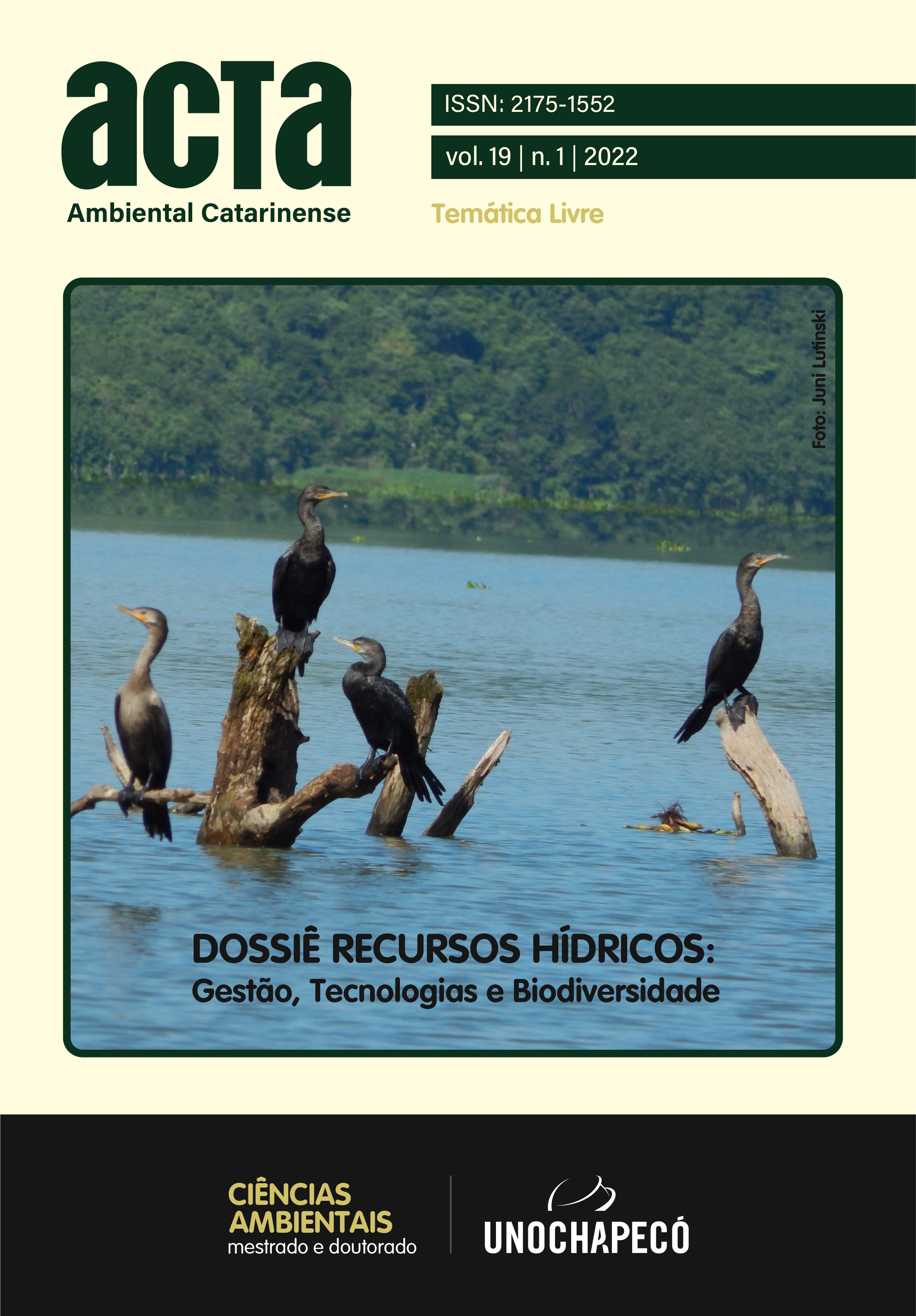AVALIAÇÃO DAS PROPRIEDADES FÍSICO-MECÂNICA DE MATERIAIS COMPÓSITOS A PARTIR DE RESÍDUOS AGROENERGÉTICOS (PALHA DA CANA-DE-AÇÚCAR SACCHARUM OFFICINARUM E RESINA À BASE DO ÓLEO DE MAMONA)
DOI:
https://doi.org/10.24021/raac.v19i1.5467Palavras-chave:
Material compósito. Palha da cana-de-açúcar. Resina à base do óleo de mamona.Resumo
A busca por um novo paradigma em preservar o meio ambiente e utilizar produtos naturais que contribuem para um maior interesse na utilização de materiais compósitos poliméricos com fibras vegetais. O estudo teve como objetivo produzir material compósito a partir da palha de cana-de-açúcar e resina à base do óleo de mamona. As fibras foram utilizadas em duas faixas de tamanhos: 0< fibras ≤4,27mm e 4,27< fibras <10mm; e resina na proporção de 10%, 15% e 20%. As partículas obtidas possuem a forma de projeção quadrada. O método de preparação foi realizado conforme a NBR 14810-2:2018, utilizando-se a técnica de moldagem por compressão a temperatura ambiente. Foram realizados os ensaios físicos: umidade, densidade e inchamento; e os ensaios mecânicos de: elasticidade, flexão e compressão. Avaliou-se o ensaio morfológico: microscopia eletrônica de varredura; e o ensaio de biodegradabilidade do compósito, no período de três meses. Para validação dos resultados, foi realizada a estatística com significância a 5% pelo teste F, comparado as médias pelo teste Scott-knott dos tratamentos físicos e mecânicos. Os resultados mostraram que os valores dos ensaios físicos atenderam os limites mínimos que estabelece a norma, resultando em 8,72% o inchamento do material compósito. No ensaio mecânico, o compósito de menor fibra e 20% de resina foi mais resistente no teste de flexão com capacidade de 3,69 N/mm², elasticidade com 211,32 N/mm² e no ensaio de compressão com 2,98 N/mm². A análise morfológica apresentou ampla interação na interface entre matriz/reforço. O ensaio de biodegradação mostrou-se que no segundo mês houve uma redução no peso do material compósito, o que mostra o aprimoramento da degradação. Portanto, o compósito produzido possui um grande potencial no mercado, pode ser utilizado na fabricação de mesas, cadeiras e paredes, além de possuir um baixo custo em relação aos compósitos produzidos de fibras sintéticas.
Downloads
Downloads
Publicado
Edição
Seção
Licença
Copyright (c) 2021 Revista Acta Ambiental Catarinense

Este trabalho está licenciado sob uma licença Creative Commons Attribution-NonCommercial-NoDerivatives 4.0 International License.
Estou ciente de que, em sendo aprovado, a publicação do artigo será no formato on-line no Portal de Periódicos da Unochapecó.Também tenho ciência de que há autorização para assumir contratos adicionais separadamente, para distribuição não-exclusiva da versão do trabalho publicada nesta revista (ex.: publicar em repositório institucional ou como capítulo de livro), com reconhecimento de autoria e publicação inicial nesta revista.
















